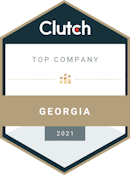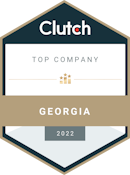Understanding Google’s Updated Image SEO Best Practices for 2025
Google’s 2025 update to image SEO guidelines introduces a shift in how websites should handle images to improve search visibility and user experience. The core recommendation is to use a single, consistent image URL for the same image across multiple pages. This prevents duplicate content issues, consolidates image authority, and allows Google to better recognize and index images, enhancing their search performance.

Traditional optimization techniques remain important, including descriptive file naming, meaningful alt text, and appropriate image sizing to balance quality and load speed. The update also emphasizes structured data to provide additional context about images and stresses optimizing images for mobile devices, reflecting the dominance of mobile search.
Monitoring image performance through analytics tools is essential to understand how these optimizations impact traffic and engagement. This update encourages a strategic approach to image SEO, where technical accuracy and user-focused practices intersect to maximize the value of visual content in search results.
Consistent Image URLs: Central to Google’s 2025 Image SEO Update
Google’s update stresses using a single, consistent URL for identical images across different pages. Hosting the same image under multiple URLs causes search engines to treat them as separate entities, diluting authority and causing indexing inefficiencies. Consolidating image URLs signals to Google that these visuals represent the same asset, improving relevance attribution and ranking.
This practice also simplifies site management by reducing broken links or outdated image versions appearing in search listings. For large sites reusing images across many pages, it optimizes resource allocation and improves overall site performance by reducing redundant server requests and streamlining crawl budgets.
Traditional Image Optimization Techniques
Beyond URL consistency, traditional optimization remains vital:
- Descriptive File Names: Clearly reflect image content to help search engines understand context without relying solely on alt text.
- Alt Text: Enhances accessibility for users with disabilities and provides semantic clues to search engines.
- Image Quality and Size: Balancing quality with file size is critical, as oversized images slow page load times, harming user experience and rankings.
- Modern Formats: Using formats like WebP or AVIF offers superior compression without sacrificing clarity, aligning with Google’s focus on speed and mobile friendliness.
Structured Data and Mobile Optimization
Structured data has gained importance, encouraging the use of schema markup to clarify an image’s role and its relationship to page content. This helps Google present images more accurately in rich results and specialized search features.
Mobile optimization remains a priority. Responsive images that adapt to various screen sizes and resolutions ensure users receive the best experience across devices, a factor Google increasingly considers in ranking algorithms.
Monitoring Image Performance
Tracking image performance through analytics tools is often overlooked but essential. Understanding which images drive traffic, engagement, or conversions allows marketers to refine strategies and focus on visuals that resonate with their audience. This data-driven approach complements technical recommendations, creating a feedback loop for continuous improvement.
Frequently Asked Questions About Google’s Image SEO Update for 2025
Why use a single, consistent URL for identical images?
It consolidates image authority, prevents dilution caused by duplicate URLs, and improves indexing efficiency and search performance.
What is the role of alt text and file naming?
Descriptive file names provide immediate context to search engines, while alt attributes improve accessibility and offer semantic clues supporting image relevance.
How should image size and format be handled?
Balancing image quality with loading speed is essential. Modern formats like WebP and AVIF deliver high-quality visuals with smaller file sizes, improving page speed and mobile responsiveness.
How can success be measured?
Using analytics tools to track which images drive engagement or conversions helps refine strategies and invest in effective visuals.
Key Takeaways for Effective Image SEO in 2025
- Use a single, consistent URL for identical images to consolidate authority and improve indexing.
- Maintain descriptive file names and meaningful alt text for context and accessibility.
- Employ modern image formats and responsive design to ensure fast loading and optimal display across devices.
- Incorporate structured data to clarify image purpose and enhance search result presentation.
- Regularly monitor image performance to inform ongoing optimization efforts.
Together, these practices create a focused and effective approach to image SEO aligned with Google’s updated standards.
For more details, see the original article by Search Engine Land: https://searchengineland.com/google-updates-image-seo-best-practices-to-say-use-the-same-image-url-for-same-image-across-your-pages-455329
As Barry Schwartz, the author of the original article, notes, “Using the same image URL across pages simplifies the indexing process for search engines and helps maintain the integrity of the site’s content.”













.png)

